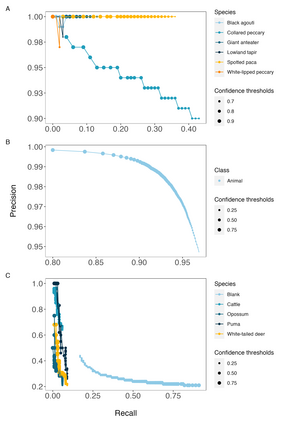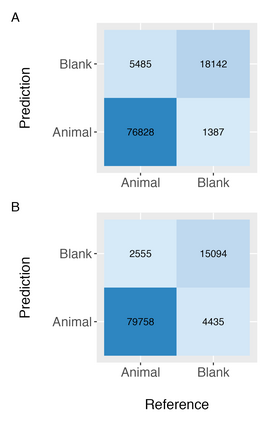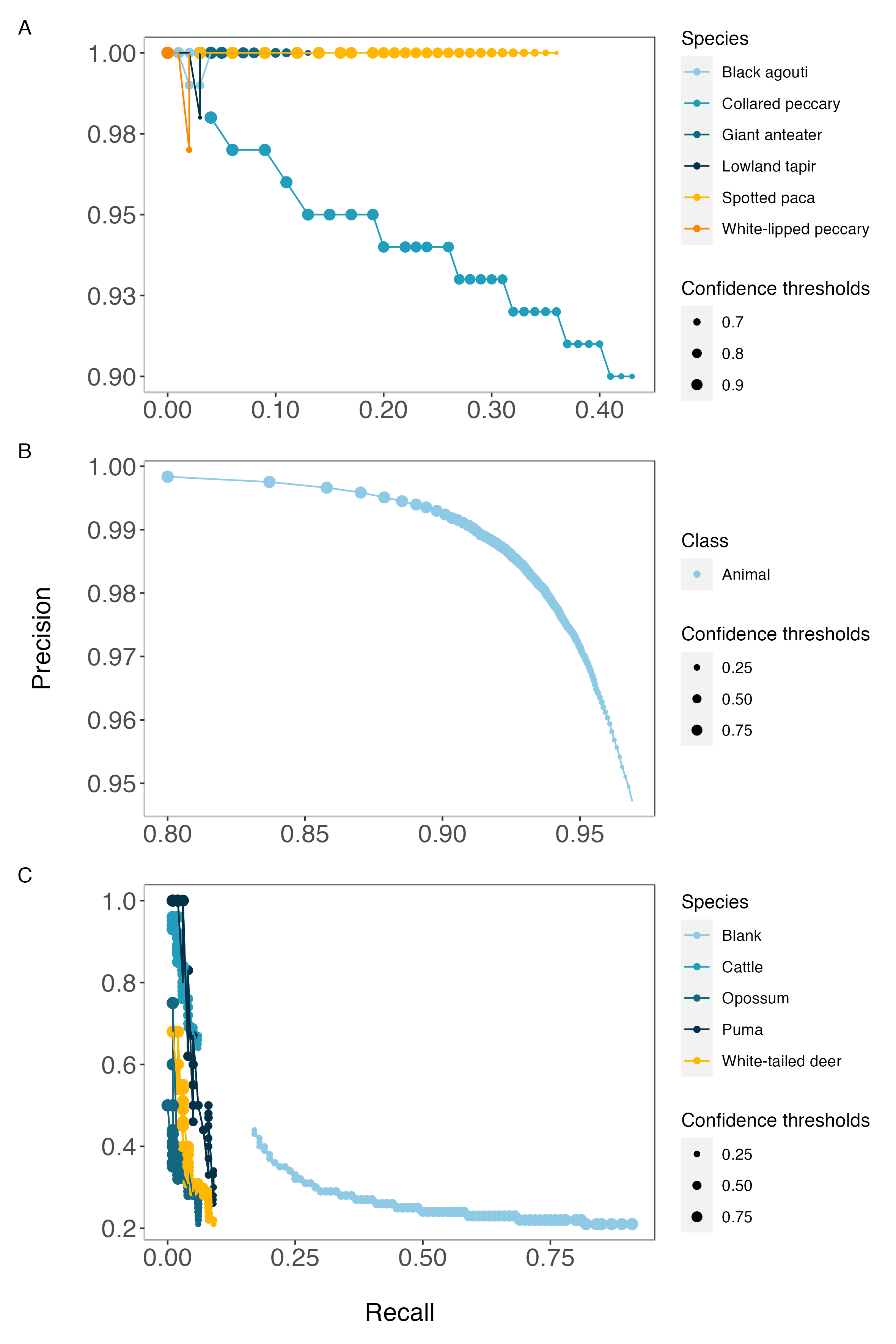Camera traps have transformed how ecologists study wildlife species distributions, activity patterns, and interspecific interactions. Although camera traps provide a cost-effective method for monitoring species, the time required for data processing can limit survey efficiency. Thus, the potential of Artificial Intelligence (AI), specifically Deep Learning (DL), to process camera-trap data has gained considerable attention. Using DL for these applications involves training algorithms, such as Convolutional Neural Networks (CNNs), to automatically detect objects and classify species. To overcome technical challenges associated with training CNNs, several research communities have recently developed platforms that incorporate DL in easy-to-use interfaces. We review key characteristics of four AI-powered platforms --Wildlife Insights (WI), MegaDetector (MD), Machine Learning for Wildlife Image Classification (MLWIC2), and Conservation AI-- including data management tools and AI features. We also provide R code in an open-source GitBook, to demonstrate how users can evaluate model performance, and incorporate AI output in semi-automated workflows. We found that species classifications from WI and MLWIC2 generally had low recall values (animals that were present in the images often were not classified to the correct species). Yet, the precision of WI and MLWIC2 classifications for some species was high (i.e., when classifications were made, they were generally accurate). MD, which classifies images using broader categories (e.g., "blank" or "animal"), also performed well. Thus, we conclude that, although species classifiers were not accurate enough to automate image processing, DL could be used to improve efficiencies by accepting classifications with high confidence values for certain species or by filtering images containing blanks.
翻译:相机陷阱改变了生态学家如何研究野生动物物种分布、活动模式和特定相互作用的方法。 虽然相机陷阱为监测物种提供了成本-效率高的方法,但数据处理所需的时间可以限制调查效率。 因此,人工智能(AI),特别是深学习(DL),处理相机陷阱数据的潜力得到了相当大的关注。 对这些应用使用DL涉及培训算法,如Concial Neal网络(CNNs),自动检测对象和分类物种。为了克服与培训CNN有关的技术挑战,一些研究界最近开发了平台,将DL纳入易于使用的界面。我们审查了四个AI动力平台的关键特征 -- -- Wildliforife Insights(WI)、Megata探测器(MD)、野生图像机械学习(ML),包括数据管理工具和AI特性。我们还在开放源GitBook中提供R代码,以展示用户如何评估模型性能,并将AI输出纳入半自动工作流程。 我们发现,WI和MWIC2的物种分类(MIL)的准确性2(MWI),一般而言,在使用低的分类中,也得出了某种数值, 直等的数值, 的数值是用于高值的, 直等的, 。(在高值的, 直等的, 直译值中, 直值是用来进行。) 的,, 直译到高值。(我们做了的直到高值, 。) 。(我们的直译到高值, 。) 。







